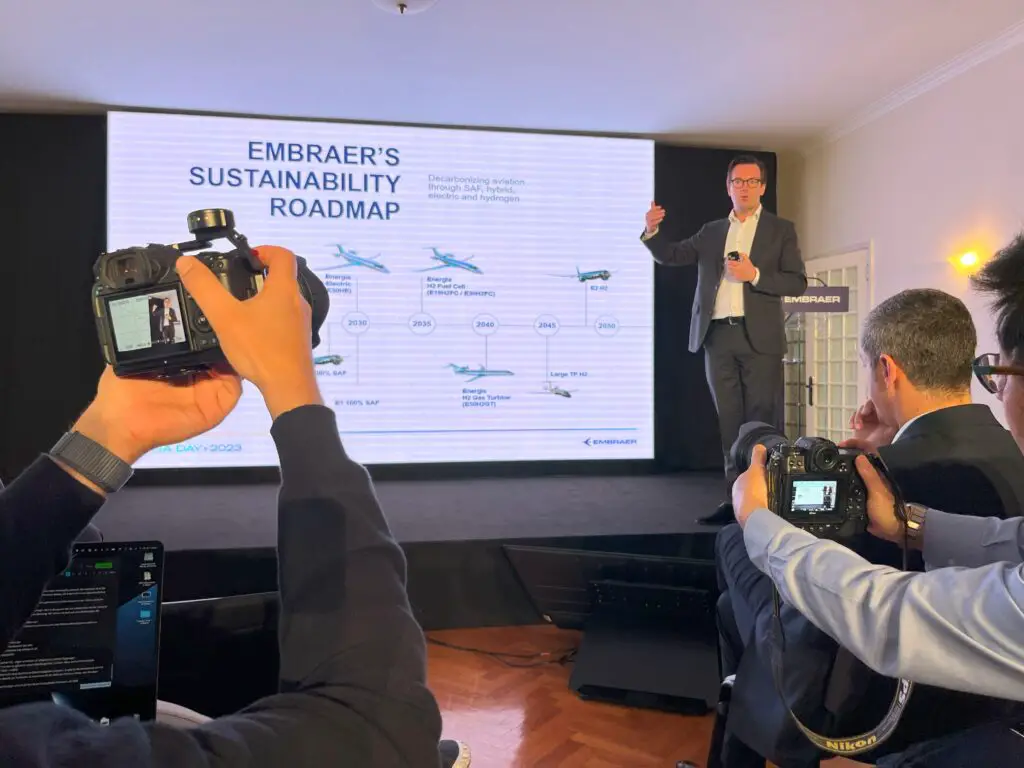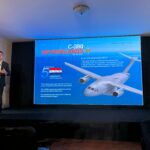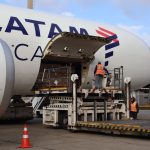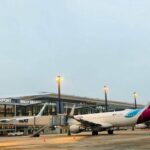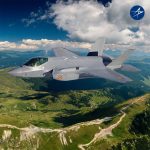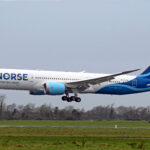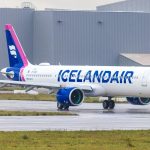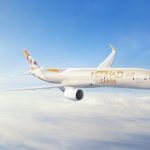Day 2 of Embraer Media Day in Alverca, Portugal, kicked off last week with a presentation by the CEO of the company’s Commercial division, Arjan Meijer.
Read the recap of day 1 clicking here.
The executive remarked that Embraer does not see the scope clause changing anytime soon in the United States, for which reason the manufacturer’s «focus [is] still all on the E175-E1» for the American market.
In the US, the scope clause is the legal impediment that restricts what type of aircraft regional carriers of legacy airlines can use, by terms of number of passengers and weight. The E175-E1 complies with the rules, but the E175-E2 is too heavy for them — which is why the program was paused in 2022.
According to Meijer, the pilot shortage in the US, which affects particularly Embraer-flying regional airlines, is already starting to show some signs of improvement, and perhaps hinting at further orders, he added that the media could «some developments there shortly».
The Dutch executive said that several E1s will hit a «replacement» age in the near future, meaning further orders could be expected going forward.
There are some major airlines in Europe still without a clear replacement for its E1 fleet — namely, British Airways, LOT Polish and Lufthansa Group. Asked by Aviacionline on how Embraer would guarantee their continuity into an E2 fleet, Meijer said that the company hoped keeping the commonality would lure airlines into deals.
While Meijer admitted some could eventually defect to Airbus — «we’re not gonna stop that» –, he remarked the gap from the E2s to mainline narrowbodies is larger than from the A220s to narrowbodies.
He also addressed the concerns with reliability of the Pratt & Whitney GTF engines, which power the E2 family. Amongst technical explanations, Embraer expects the situation to be normalized in the coming years.
Asked by a member of the media, Meijer said twelve E2s are currently grounded due to «varying issues». Currently, over 74 E2s are in service, according to data by Planespotters.net.
Back to the good news, Meijer outlined the reasons why customers chose to add Embraer to its fleet — some of which had only ever operated a single aircraft type.
In his view, albeit adding a new type to the fleet adds some complexity to an airline’s operation, airlines can gain from a smaller capacity in certain routes with less demand — to play «the profit game».
Onto Embraer’s other plans for commercial aircraft, the executive talked about the turboprop program — a plan he said was now paused, something «many airlines were disappointed» with.
While he said Embraer «still [sees] the demand from the market» for a next-generation turboprop, there was no engine solution the company was satisfied would bring sufficient gains.
Meijer said «we’re not in a rush» to restart the program, noting it would be more of an issue on how much longer customers would be willing to wait for a definition.
Finally, the presentation ended with the commercial division’s work on sustainability and the Energia family, a concept for a small hybrid aircraft of up to 30 seats. Entry in service, he said, would not come before the next decade; details about the project — beyond the company’s intentions to develop it — are still unclear.
Following the Commercial presentation was the one on Embraer’s Defense division, made by its Chief Executive Officer, Bosco da Costa Junior. The star of the show was the multipurpose transport aircraft C-390 Millenium, which last year received its latest order, from the Royal Netherlands Air Force.
Embraer said it is increasing its efforts towards selling the C-390 to other nations, including NATO members in Europe and the United States. For the latter, Junior said Embraer has been simulating scenarios in the Pacific where the aircraft could prove to be useful.
The other highlight of the presentation was the A-29N, the NATO-configured version of the Super Tucano, Embraer’s light attack aircraft.
Clearly hoping for a deal with a European country, the manufacturer intends the aircraft to be deployed in advanced training missions. As nations move fast towards fifth generation fighters, the Super Tucano would provide a cost-effective framework of learning.
The Air Forces’ use of the A-29N would be «to avoid to put the pilots since the beginning in a fifth-generation fighter», said da Costa, something which would cost «a lot of money».
The third presentation of the morning was given by Embraer’s director of sales engineering for the Executive division, Ricardo Carvalhal.
In a passionate briefing about Embraer’s current offering of executive jets, the highlight was naturally Embraer’s blockbuster (for its size) deal with NetJets for up to 250 Praetor 500.
According to the executive, the Praetor order book is now sold out through 2025.

After a pause for lunch, the last talk of the event was made by André Stein, co-CEO of Eve, the eVTOL (electric vertical take-off and landing) company in which Embraer holds a controlling stake.
Stein presented the developments towards building regulatory frameworks with civil aviation agencies. Eve holds an advantageous position in the eVTOL market; besides the backing of a major aircraft manufacturing company, it has a comfortable cash position and letters of intent for over 2,700 eVTOLs.
Eve has not yet announced a final prototype, but Stein said it is already conducting tests, in Embraer’s Gavião Peixoto airfield, for better understanding the behavior of its propellers.
Assembly, the executive said, is expected to be in Brazil, although a location for the manufacturing of Eve’s eVTOLs has not yet been found.

